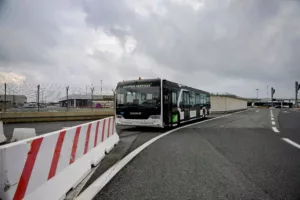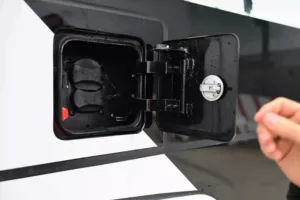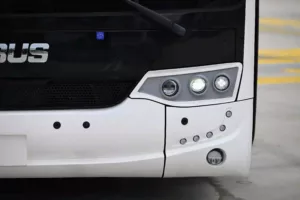
It may not be on the front page yet, but airports are collaboratively choosing emission-free alternatives to diesel apron bus fleets. The trend can be seen at airports far and wide, from Lithuania to Germany and the United Kingdom. The electric passenger bus market is experiencing a great upwards trajectory as authorities worldwide accelerate their move toward sustainable operations. These specialized vehicles, which transport passengers between terminals and aircraft, represent a crucial component in aviation’s broader push for reduced emissions and operational efficiency.
Market Expansion and Growth Drivers
Recent industry studies have predicted that the market for electric airport buses will develop at a compound annual growth rate of about 9.4% reaching into 2034. This strong growth projection is mainly the result of a number of different variables that make electric buses the most alluring option to operators throughout the world.
Airports and aviation hubs are facing mandates to safely meet environmental goals by cutting carbon emissions wherever and whenever possible. Because large international airports like Singapore Changi, London Heathrow, and Amsterdam Schiphol have committed to fulfilling net-zero emissions targets, ground fleets must also be electrified. With their consistent dedication to environmental efforts, electric apron buses currently offer a quick chance to make a significant stride towards green objectives.
Beyond just the environmental benefits, the economic case for electric apron buses has strengthened considerably since their first step into the market. While the initial upfront acquisition price remain higher than the conventional diesel vehicles, the total cost of ownership is increasingly in favor of battery electric units. Operational savings are derived from generally lower energy costs, reduced maintenance needs, and longer vehicle lifespans. Additionally, many airports can qualify for subsidies and incentives designed to rapidly accelerate the transition to electric vehicle adoption.

Technological Advancements
Some of the recent advances in technology have have been able to solve many of the early issues with electricity. Battery sizes and charging stations can now let buses run entire airport shifts on a single charge. Rapid charger technology can now guarantee quick recharges, which reduce these delays and keeps operations as smooth as possible.
Newer models of electric airport buses also tend to have better working climate systems in place. These keep the passengers comfortable without draining much of the battery power of the vehicle. This particular improvement addresses a major obstacle in very hot or cold climates. Manufacturers have also begun to shift their focus on building buses designed specifically for apron operations and terminal environments. These new designs can help improve the weight balance, passenger flow, and overall performance of a shuttle experience.
Regional Market Developments
Europe is a major leader in emission-free apron bus adoption, with airports in Scandinavia, Germany, and the Netherlands having the highest electric fleet percentages. The Asia-Pacific region is quickly catching up, especially in China, Japan, and Singapore, where new airports are built or upgraded with electric infrastructure from the start. In North America, efforts are speeding up as well. Massively busy airports like San Francisco International and Seattle-Tacoma are investing heavily in green ground transport options. Latin America and the Middle East have smaller shares now, but are expected to grow the fastest over the next five years. Their modernization projects are gaining lots of momentum and will be a large boost to future electric fleet adoption.

Future Outlook
The very positive growth projection of the electric apron bus market is expected to continue, as environmental regulations spread to more areas and more airports commit to sustainability targets. Market reports indicate that the market value will inflate to four billion dollars by 2033.
Integration with broader energy systems presents the next frontier and opportunity in this development. Several leading airports are beginning to connect electric charging infrastructure with on-site renewable energy generation networks, creating modern zero-emission transportation systems.
As passenger air travel successfully rebounds from pandemic-era lows and airports resume expansion plans, the electric apron bus market stands in a great place for continued strong growth, representing a significant success story in aviation’s collaborative journey toward zero emission operations. For more details on the specifications of an electric airport bus, contact one of our business representatives today.